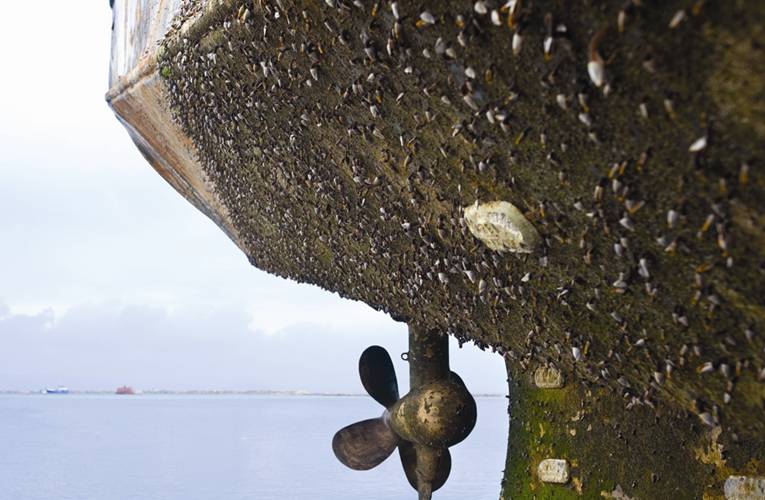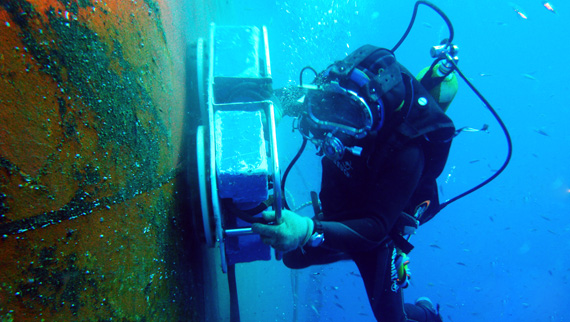As we all know, the Pandemic has hit Maritime Industry in many ways, and while moving ahead with 2021, the hope for a better Ocean kept popping in our minds. The Introduction of the first-ever In-water Hull Cleaning Industry Standard with capture capabilities by the Baltic and International Maritime Council (BIMCO) and the International Chamber of Shipping (ICS), has proved that hope is never lost and finally, a piece of good news for ship owners and cleaning companies!
Multiple ships sail around the globe through the years and their Hull can potentially transfer invasive alien species which can multiply rapidly in local waters without natural enemies, thereby harming the local marine-ecology. Biofouling management is a growing concern as a foul Hull not only increases the operating cost but also causes more CO2 emission. A number of countries like the USA, Australia, the Baltic Sea Region, New Zealand, Hawaii, etc. had biofouling management high on the agenda with regional and national regulation on the drawing board or already in place. Therefore, these countries made it compulsory for ships to have the ship Hull cleaned before entering their waters. Owners resorted to either in-water or dry-dock cleaning, but due to the lack of a common method to evaluate cleaning it became difficult to comply with such varying rules.

In order to tackle these problems, BIMCO and ICS along with companies and organizations like Akzo Nobel, C-Leanship, CMA Ships, DG Diving Group, Fleet Cleaner, Hapag-Lloyd, Hempel, HullWiper, International Association of Classification Societies, Minerva Shipping, Portland Port (UK), Port of Rotterdam and PPG Coatings came together to develop the first industry standard for in-water cleaning.
This standard outlines the requirements for planning and carrying out in-water cleaning while the ship is alongside or at anchorage and focuses only on the system wherein the material, removed during cleaning, can be captured. This standard can be used as a responsive cleaning by ship owners as a part of the ship’s normal maintenance system to monitor changes in hull performance. Similarly, biofouling conditions will enable them to initiate in-water cleaning with due diligence before the biofouling growth becomes severe.
The standard also includes:
- Criteria for the cleanliness of water pumped back to sea
- An approval procedure for cleaning companies
- Minimum reporting requirements
- Minimum requirements for an inspection, service and cleaning reports
After rigorous testing, BIMCO and ICS aim to capture at least 90% of the macro fouling to reduce and remove organisms and materials down to a ‘microscopic size’ before releasing the water back into the sea.
This process can be carried out only by cleaning companies that are approved in accordance with the Approval procedure for in-water cleaning companies. After this, the company will evaluate the types of biofouling, the height of hard calcareous biofouling and the coverage that the system can clean and capture. Certain areas of the hull are more susceptible to biofouling than others and certain areas contain biofouling that is beyond the tested capability of the approved cleaning system. In this case, the cleaning shall be undertaken by a more capable cleaning company, out of water or after obtaining special permission from the authorities.
The cleaning unit used to clean the hull, propeller and/or niche areas in-water may be operated by the diver or remotely by control unit using a Remotely Operated Vehicle (ROV). This cleaning unit has a storage unit connected with some hoses which allow it to remove and capture foul materials, separate it from the seawater and treat both separately. The influent water will be then treated using heat, biocides, or ultra-violet light; and the particulate and dissolved biocides and compounds relating to the Anti-Fouling System (AFS) will be tested and reported. Before discharging the water, it will be measured against local water quality parameters of Total Suspended Solids (TSS).
Global benefits of this cleaning process.
- During the process, the unit collects the foul material from the ship. This will reduce the pollution from heavy metals and paint flakes released into the ocean during underwater cleaning hereby protecting marine life.
- The use of ROV will reduce the risk to divers cleaning the hull as well as maintain the performance of the Hull paint coat.
- Improve the level of communication between ship owners and Anti- Fouling System (AFS) manufacturers.
- This process of separation and treatment will not have significantly high ambient levels.
- The cleaning companies can demonstrate that their products protect the marine environment and the port authorities can rest assured that the environment is not polluted by cleaning residues.
- Most importantly, ship owners will gain confidence that their ships are cleaned to a safe and effective standard.
The new standard establishes a benchmark for safe and environmentally sound underwater hull cleaning. Several shipping companies have already signed up to participate in implementing the standard on a small scale. The procedure and other requirements for reporting and inspection are all laid by BIMCO and ICS on their website.
Source: BIMCO






